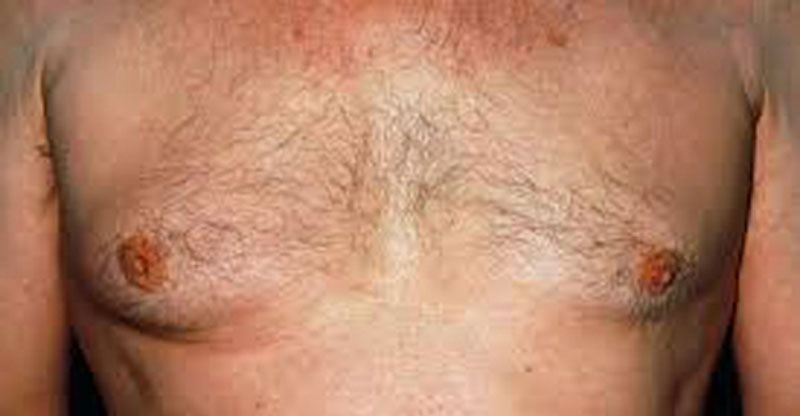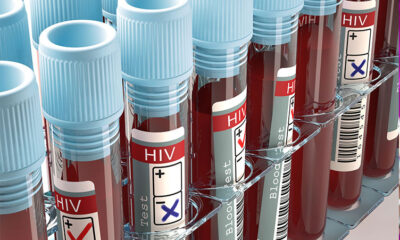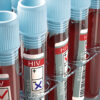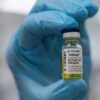Health
Breast cancer in resurgence
Experts warn that men are also at risk
Most people think that breast cancer is a disease of the women folk. Alas, research shows that men too are susceptible to the disease, although at lower frequency than women.
Findings reveals that breast cancer is becoming a more serious health problem in Uganda than previously recorded, as shown by the increase in the number of cases, compared to other types of cancer such as cervical and cancer of the oesophagus.
According to Dr. Fred Okuku from the Uganda Cancer Institute, there are an estimated 50 cases out of every 100,000 persons in Uganda which is equivalent to 200,000 cases of cervical in Uganda.
Dr. Okuku said: “There is an increasing drift for breast cancer as we see cervical cancer cases reducing in numbers.” UCI statistics indicate that there are 105.5 breast cancer cases for every 100, 000 women while 8.4 per 100,000 breast cancer happens in men. Those who take more than five years with breast cancer in Uganda are only about 2.8 per 100,000.
Dr. Okuku however informed The Sunrise that Breast Cancer cases have increased over the past year, raising concern that the condition could overtake Cervical cancer as the biggest type of cancer in Uganda.
An investigation by The Sunrise further reveals that breast cancer reveals that although fewer, some men have been diagnosed with breast cancer. Records from the Uganda Cancer Registry show that up to 8.4 out of every 100,000 men suffers from breast cancer. This means that 0.0084% of Ugandans or 336,000 Ugandans could be suffering from the disease.
The changing trends in cancer prevalence reveal that cervical cancer, while still the most predominant type of cancer, has declined slightly with breast cancer, prostate cancer and cancer of the oesophagus in close pursuit.
According to the Kampala Cancer Registry, there has been an overall increase in the risk of cancer, with incidence rates of major cancers such as breast and prostate showing particularly marked increases (3.7% and 5.2% annually, respectively).
In the 1960s the KCR indicated that cancer of the oesophagus was the most common cancer of men (and second in women), and incidence in the last 20 years has not declined. Cancer of the cervix, always the most frequent cancer of women, has shown an increase between 1991 and 2010 (1.8% per year), although the rates appear to have declined in the last 4 years. HIV prevalence in adults in Uganda, is one of the key factors for the increase in cancer.
Changing life-styles of most Ugandans characterised with less physical exercise and eating of more fried food is cited as one of the major causes in the shift.
Information from the US-based Mayo Clinic in Minnesota, reveal that everyone is born with a small amount of breast tissue. It consists of milk-producing glands (lobules) and fats ducts that carry milk to the nipples.
During puberty, women begin developing more breast tissue, and men do not, but because men are also born with a small amount of breast tissue, they can develop cancer.
Who is at risk?
Both UCI and the American Cancer Institute say human cells in men start becoming cancerous at between 45 and 79 years of age. They will experience smaller tumors and little or no local lymph node involvement.
Treatment
Surgeon Stephen Cossive, a researcher and at the Mayo Clinic says: “Surgery is a treatment option for male breast cancer and may be carried out with other treatments; a surgeon removes the entire breast and the lymph nodes in the armpit, then applies estrogen hormone therapy. The tomoxifen medication in hormone therapy prevents estrogen from entering the cancerous cell.
“If there are no estrogen receptors on the cancerous cells, hormone therapy does not work. In these cases, chemotherapy is used. Chemotherapy is usually given after surgery in order to prevent the cancer returning,” he added.
Risk Factors
UCI and the American Cancer Society (ACS), say that old men have the highest risk of getting breast cancer; as age increases so do the risks of getting it. The peak incidence of male breast cancer occurs between the ages of 68 and 71.
Taking estrogen-related drugs, such as those used as part of a sex-change procedure or for hormone therapy for prostate cancer, increases the risk of breast cancer. Also, having a close family member with breast cancer, or certain conditions, such as cirrhosis of liver which reduces male hormones and increase female hormones, increases breast cancer risks. Obesity, too, increases the risk.
Dr. Okuku says that early detection can help prevent the spread of cancer. If there is a history of male breast cancer in the family, a person should check regularly for lumps and report any changes to a doctor as soon as possible. “In general, leading a healthy life-style is a good way to help prevent male breast cancer, as well as many other serious health conditions,” he added.
Comments

























